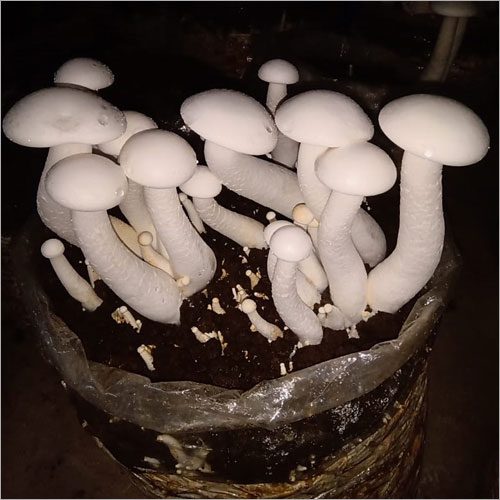The Emperor Mushroom has the ability to withstand drought and heat, making it highly suitable for development in areas that are becoming increasingly dry and hot due to climate change in Vietnam.
High Temperature Resistance of 30 – 40 Degrees Celsius
Dr. Hoang Thi Nga from the Department of Agricultural Technology, Hanoi University of Technology, National University of Hanoi, stated that the Emperor Mushroom (Calocybe indica), also known as Milky Mushroom, is a native edible mushroom from hot and humid regions.
The Emperor Mushroom is rich in antioxidants and contains several secondary metabolites, which provide pharmacological effects, making it a nutrient-rich functional food. It is abundant in B vitamins.
Nutritionally, the Emperor Mushroom boasts superior levels of macronutrients, micronutrients, and trace elements compared to two popular mushroom varieties, namely the Oyster Mushroom and the Button Mushroom. At least 17 fatty acids have been identified in the Emperor Mushroom, including beneficial unsaturated fatty acids.
A notable feature of the Emperor Mushroom is its high heat tolerance (30 – 40 degrees Celsius), which allows it to thrive in tropical and subtropical climates. This is considered a significant advantage for cultivating the Emperor Mushroom in hot, dry areas affected by climate change in Vietnam. Additionally, the cultivation method for the Emperor Mushroom is quite convenient and requires low investment, while the mushroom has high nutritional value and a long shelf life.
After extensive research and investigation of the species, Vietnamese scientists have developed an optimal formula for growing the Emperor Mushroom in dry, hot conditions. The Emperor Mushroom can be cultivated on various substrates, primarily using sawdust, sugarcane residue, and cotton waste… supplemented with corn powder, rice bran, light CaCO3 powder, and lime water (3.5 – 4 kg lime per 1,000 liters of clean water).
Previous studies have tested the growth potential of the Emperor Mushroom in soil-sand-corn powder, straw-corn powder, or wheat bran environments, yielding good results.
In many areas, growers have utilized straw from wheat, corn stalks, millet stalks, rice bran, highland millet powder, and wheat bran as substrates for producing the Emperor Mushroom. The mushrooms can be harvested 3 – 4 times within 40 – 45 days of care. The Emperor Mushroom can thrive in May – June (the peak hot season of summer).
According to the research team, edible mushrooms can be used as a food source containing many secondary metabolites with pharmacological effects to improve human digestion and immune system.
Wide Application Potential
Research indicates that extracts from edible mushrooms contain numerous alkaloids, fatty acids, cellulose, carbohydrates, vitamins, and important antioxidants that enhance metabolism and prevent the development of cancer cells.
In the Emperor Mushroom, phenolic compounds such as catechin, syringic acid, p-coumaric acid, and caffeic acid play an anti-inflammatory role by inhibiting reactive oxygen species.

Emperor Mushroom.
Meanwhile, some compounds extracted from the Emperor Mushroom have been noted for their ability to inhibit the growth of Escherichia coli and Staphylococcus aureus by synthesizing catechin and hexadecenoic acid into bacterial cell walls. Additionally, the extract of the Emperor Mushroom has been reported to have effective anti-inflammatory properties.
Due to these values, the Emperor Mushroom has potential applications in the production of functional foods as well as raw materials for animal feed. For example, flour made from the Emperor Mushroom added to breakfast meals has been shown to help regulate blood sugar and cholesterol levels in individuals with diabetes or blood pressure issues.
Similarly, flour made from the Emperor Mushroom added to cookie recipes helps improve protein content, increase β-glucan levels, and enhance flavonoid groups. The use of the Emperor Mushroom in various recipes is increasingly preferred over the addition of the Button Mushroom and Shiitake Mushroom.
The Emperor Mushroom has diverse application potential. According to the research team, to sustainably develop the mushroom industry and Emperor Mushroom production, it is essential to ensure a stable supply of mushroom seeds through a liquid breeding process, which helps reduce costs and save breeding time.
There is a need to strictly control the substrates for mushroom cultivation and diversify the sources of materials from agricultural waste, not only to provide economic benefits but also to minimize environmental pollution.
Finally, attention should be paid to post-harvest preservation by processing mushrooms into various products, such as extracts, ground flour, mushroom jams, mushroom floss, mushroom sausages, and pickled mushrooms. This helps extend shelf life, diversify products to meet market demands.


















































